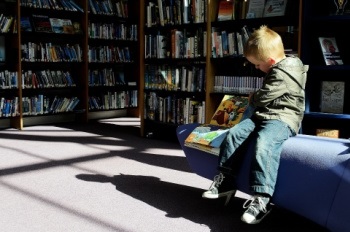Keeping our Children Safe at School
With most schools now back in full session and darker nights drawing in, this is the time our thoughts turn to issues of student safety, from kindergarten to college.
 When we think of school safety, maybe in the current climate, our imaginations spring immediately to the risks of intruder and gun incidents.
When we think of school safety, maybe in the current climate, our imaginations spring immediately to the risks of intruder and gun incidents.
It's a major issue for us all, including parents on Long Island and across the state. But, without wanting to minimize these risks, there's a lot more to everyday school safety for our kids that we need to consider.
With that in mind, here are some tips to help make our young students' lives safer and more secure:
Travel
On foot, two wheels, by bus or auto? However students travel, they're exposed to many hazards en route. Their safety can be enhanced by ensuring:
- They wear high visibility clothes.
- They know the best and safest route to school. It's a good idea to practice this with them now and then.
- They know and understand all the rules of the road that affect them as pedestrians, riders or drivers.
- Walkers walk on the sidewalk. If there's no sidewalk, walk facing traffic. To maximize awareness, they shouldn't wear headphones or view their phones. Or, put the other way around, never walk while using your phone!
- Bicycle riders wear helmets, watch for car doors opening as they pass, and use hand signals when turning. Ride single file on the right side of the road. If it's dark, ensure they have good front and rear safety lighting.
- Bus riders stay seated and calm while traveling, wear belts where they have them and avoid crossing in front of the vehicles. Waiting for the bus, stand six feet away from the curb. On the bus, stay seated until it has stopped.
- Drivers (whether students or parents) avoid blocking crosswalks, stop while a bus is loading or unloading children, and, DON'T TEXT while behind the wheel.
Crime and Violence
Earlier this year, the Government established a Federal Commission on School Safety to look at a wide range of issues related to violence and threats at school including cyberbullying and social media, young people's consumption of violent media like computer games and movies, and the minimum age for buying firearms.
 As we await their findings and recommendations, be mindful of what you can do right now to protect your student. For example:
As we await their findings and recommendations, be mindful of what you can do right now to protect your student. For example:
- More than one in four high school students are bullied online or at school every year. Look for the early warning signs of bullying, such as changes in behavior and/or school performance, frequent excuses for skipping school and unexplained injuries. If you become aware of bullying, either by or against your child, don’t tolerate it. Talk to the school immediately. For more on this topic, check out this online guide from Long Island's Child Abuse Prevention Services (CAPS) -- https://capsli.org/
- Theft of personal items. Students are easily distracted and therefore vulnerable to theft of personal items, especially phones, tablets, and computers. Talk to them about this and make sure items are clearly marked for identification and those digital devices are set to be easily traced or to be rendered inactive if they're stolen.
- Trauma events. Know your schools' plans for responding to active threats, such as lockdowns, reunification locations, and automatic call systems, and talk to your kids about them in a calm manner.
Health
Those backpacks just seem to get bigger and heavier every semester, don’t they? And what about other hazards and health risks your students may face? Did you know that your child is nine times more likely to suffer a school injury than school violence? Here's some advice you can share with your student.
- Backpacks should never be wider or longer than the wearer's torso and have padded back and shoulder straps. Encourage students to leave books they don’t immediately need in their lockers.
- Teach them to treat others with respect on the playground and use equipment for its intended purpose. As a parent, check for playground hazards such as lack of supervision, More information on this here: https://tinyurl.com/playground-hazards
- Substance abuse. It's a risk we dread to think of but it's ever-present in many schools today. Talk to your kids about this and know the signs of potential issues. The government's National Institute on Drug Abuse is a good source of information both about the warning signs and how to respond. See https://tinyurl.com/substance-abuse-help
- Limit the risks of illness and infection by ensuring students have all relevant inoculations. If they show symptoms of infection, keep them off school to avoid the risk of spreading the illness.
- Make sure your student has the right gear to avoid or at least protect against sports injuries. Here are some more tips on avoiding sports injuries: https://tinyurl.com/sports-injury-tips . Also, ensure you know the symptoms of a concussion. See this info sheet from the National Safety Council: https://tinyurl.com/spot-concussion
- Healthy eating. Encourage your student to eat wisely in the school cafeteria or lunch program. If you pack lunch, keep it refrigerated overnight and include a few healthy snacks.
Finally, for parents, there are three additional important responsibilities to fulfill.
First, as we've already mentioned, make time to talk to your kids about safety, security and other crucial issues such as drug-taking and stranger-danger. For the young ones, make sure they know your phone numbers, including how to get in touch with you at work or elsewhere outside the home, as well as how to call 911.
Second, be aware and as active as possible in the implementation of safety policies at your students' schools. Plug into the activities of your PTAs, know the school and school district rules -- and make sure your student knows them too.
Finally, make sure you have the right insurance coverage for some of the risks your kids may face -- things like personal property coverage and auto insurance if they're drivers.
If you want to discuss your insurance protection, please speak to us at Newbridge Coverage by calling: 516-781-9000
It's a natural thing for parents to worry about their children when they're away from their protective custody. But practicing good safety procedures and being well-protected with insurance can help deliver a strong measure of peace of mind.

